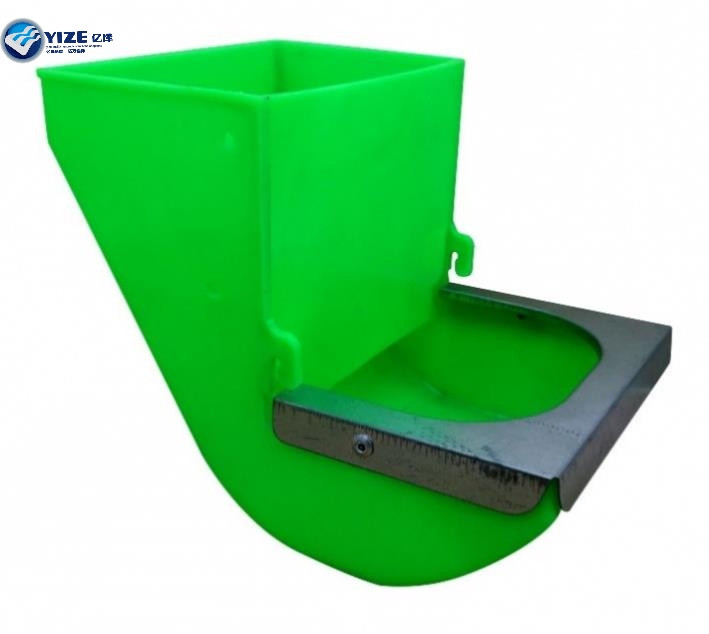Efficient Options for Feed Grinding and Processing Techniques
តុលា . 15, 2024 09:28 Back to list
Efficient Options for Feed Grinding and Processing Techniques
The Importance of Feed Grinders in Modern Agriculture
Feed grinders play a crucial role in modern agriculture, particularly in the livestock and poultry industries. These machines are designed to break down bulk feed materials into manageable sizes, ensuring that animals receive a balanced diet tailored to their nutritional needs. The reduction of whole grains, seeds, and other feed components into smaller particles enhances the mixing process and improves feed digestion. This article explores the significance of feed grinders, their types, and their impact on agricultural productivity.
The Functionality of Feed Grinders
Feed grinders operate on a simple principle they crush and grind raw feed materials into smaller particles. This process includes several methods such as hammer milling, roller milling, and burr grinding. Hammer mills use rotating hammers to shatter feed materials, while roller mills employ two or more rotating cylinders to compress and grind grains. Burr grinders function by grinding feed as it passes through two plates with toothed surfaces.
The reduction in particle size achieved by these machines enhances the surface area of the feed, facilitating better access to digestive enzymes in an animal’s stomach. This increased digestibility leads to improved nutrient absorption, ultimately enhancing the growth rates and overall health of livestock. Moreover, finely ground feed makes it easier to mix with other supplements, ensuring a homogenous blend that meets the dietary requirements of the animals.
Types of Feed Grinders
1. Hammer Mills One of the most common types, hammer mills are versatile and can handle various feed materials. They are ideal for grinding grains such as corn, wheat, and barley, and can also be used for fibrous materials like silage or hay.
2. Roller Mills These are primarily used for grinding grains and are known for producing a more uniform particle size compared to hammer mills. Roller mills are especially popular in large-scale operations where consistency in feed quality is crucial.
3. Burr Grinders Often used for smaller operations, burr grinders can effectively process grains, legumes, and forages. They are less common than the other two types but offer a reliable option for small farms.
feed grinder

4. Pellet Mills While not a traditional grinder, pellet mills compress ground feed into pellets. This not only simplifies feeding but also reduces waste and enhances feed storage efficiency.
The Impact on Livestock Health and Production
The use of feed grinders has a direct impact on livestock health. Properly processed feed leads to improved digestibility, which can translate to faster growth rates and higher milk or egg production. For instance, cattle fed with finely ground grains often exhibit increased weight gain compared to those provided with whole grains. This effect also extends to poultry, where a finely ground feed contributes to better feed conversion ratios.
In addition to livestock productivity, the use of feed grinders helps in minimizing feed waste. Animals tend to waste less feed when it is finely ground and well-mixed, thereby maximizing the utilization of nutrients. This efficiency is particularly significant in a world where feed costs continue to rise.
Environmental Considerations
Sustainable agricultural practices are vital for the future of farming. The use of feed grinders can support these efforts by enabling farmers to create feed from various by-products, such as leftover grains or legumes, which might otherwise go to waste. By grinding these materials, farmers can transform them into high-quality, nutritious feed, reducing reliance on commercially manufactured feed and minimizing the carbon footprint associated with transporting these products.
Conclusion
Feed grinders are an essential component of modern agricultural practices, providing numerous benefits to livestock health and farm productivity. By enabling better digestibility and efficient feed management, these machines help farmers optimize their operations. As the agricultural sector continues to evolve with advances in technology and sustainability, the role of feed grinders will undoubtedly remain significant in meeting the growing demands for high-quality animal nutrition.
-
High Performance Exhaust Fan – Efficient Ventilation Solutions for Home
NewsJun.10,2025
-
High-Quality Gestation Pen for Sows Durable Mobile Pig Pen & Simple Pig Pen Solutions
NewsJun.10,2025
-
High Quality Rabbit Cage Double Tier Designs & Welded Wire Mesh Supplier
NewsJun.10,2025
-
Floating Fish Feed Machine - High Efficiency Floating Fish Feed Extruder for Small Scale Production
NewsJun.10,2025
-
Premium Poultry Housing Solutions Mobile & Commercial Free Range Options
NewsJun.10,2025
-
Industrial FRP Fans Corrosion-Resistant Blades & Centrifugal Systems
NewsJun.09,2025






